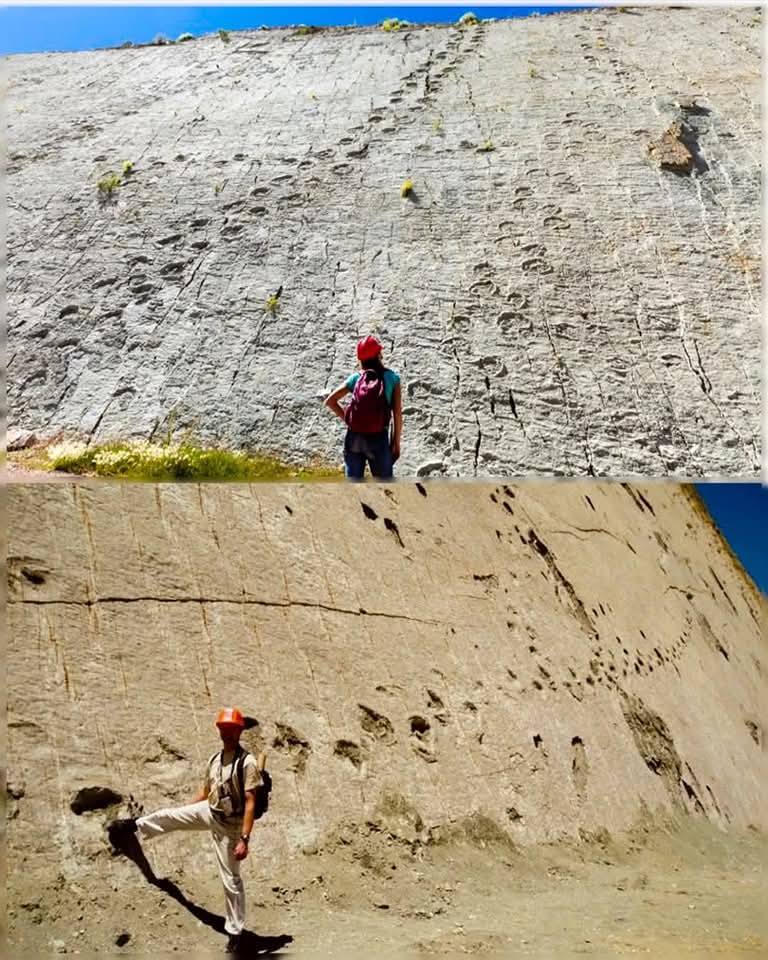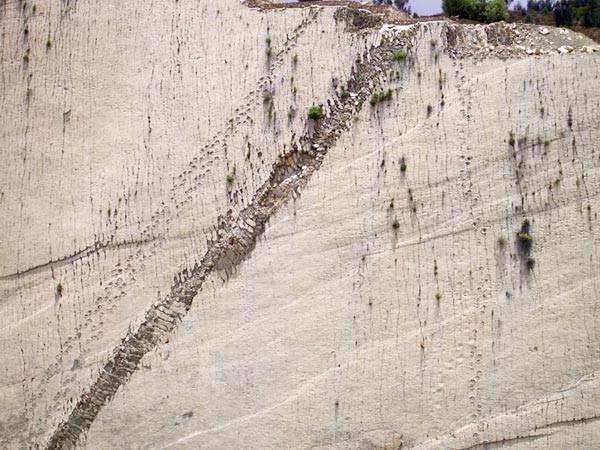Cal Orck’o – A Unique Legacy of the Dinosaur Era
Located near Sucre, Bolivia, Cal Orck’o is one of the most remarkable paleontological sites in the world. This is not merely a massive limestone wall but also a “dancefloor” that preserves traces of the dinosaur age. The nearly vertical limestone wall stretches over 1.5 kilometers in length and rises approximately 80 meters high, earning it the nickname “Dinosaur Dancefloor.”
What makes Cal Orck’o extraordinary is the presence of over 5,000 fossilized dinosaur footprints. These tracks belong to at least eight different dinosaur species that lived around 68 million years ago during the Late Cretaceous period.

A Journey of Geological Transformation
Millions of years ago, Cal Orck’o was a flat, muddy lakeshore. Various dinosaurs of all shapes and sizes walked across this surface, leaving their footprints in the soft ground. Over time, layers of sediment covered the tracks, preserving them within the rock.
Later, tectonic plate movements elevated the once-flat terrain into the steep cliff seen today. This geological transformation not only created a stunning landscape but also unveiled a treasure trove of stories hidden within ancient footprints.

The Dinosaurs That Left Their Mark
The footprints at Cal Orck’o were made by a diverse range of dinosaurs, from fearsome carnivores to gentle plant-eaters. Here are some of the key species identified:
- Tyrannosaurus rex: The mighty T. rex left behind large tracks that symbolize the strength and speed of this apex predator.
- Three-toed theropods: Smaller carnivorous dinosaurs left distinct three-toed footprints, characteristic of their agile movements.
- Long-necked sauropods: Massive, rounded footprints indicate the presence of these “gentle giants” with elongated necks and enormous bodies.
- Duck-billed hadrosaurs: Herbivorous dinosaurs left hoof-shaped tracks, adapted for navigating the muddy terrain.

Scientific Significance
The footprints at Cal Orck’o are not merely fossilized impressions; they hold valuable insights into dinosaur behavior, habitats, and movement. Some tracks are so well-preserved that claw marks remain visible, enabling paleontologists to study how these ancient creatures hunted, migrated, or moved in herds.
The diversity of tracks at a single location also suggests that Cal Orck’o was once a rich ecosystem where various dinosaur species coexisted and interacted.
Parque Cretácico – A Window into Prehistoric Times
Cal Orck’o is the centerpiece of Parque Cretácico (Cretaceous Park), an attraction that captivates both tourists and scientists alike. Visitors can join guided tours to explore the footprint wall, visit a museum housing rare fossils, and marvel at life-sized models of dinosaurs, vividly bringing these prehistoric creatures to life.
Beyond offering an immersive glimpse into the past, the park also plays a crucial role in the conservation and study of fossil heritage.

Conclusion: A Magical Journey Through Time
Cal Orck’o is more than just a limestone wall; it is a monumental natural history book, chronicling a significant chapter in Earth’s evolutionary story. With its unique beauty and immense scientific value, this site is a must-visit destination for anyone intrigued by dinosaurs and the mysteries of the prehistoric world.
If you have the chance, visit Cal Orck’o to embark on a journey back in time to the Late Cretaceous period, where the footprints of dinosaurs still echo across the millennia, etched forever into the ancient limestone.

